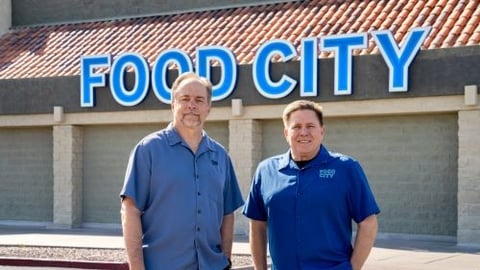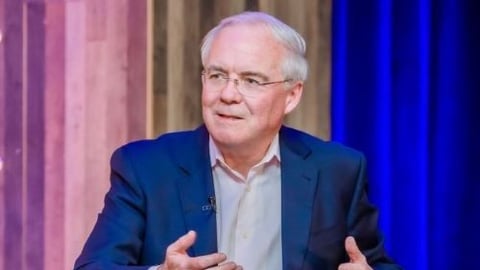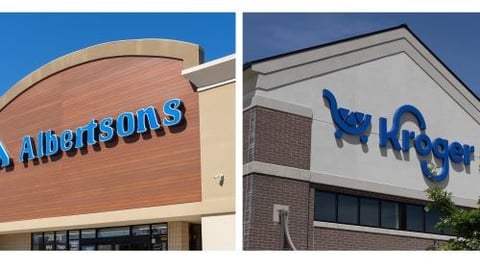Kroger’s Fresh-Led Reset
After a tumultuous year of leadership transition and a blocked merger, The Kroger Co. is refocusing its strategic lens for 2025. The Cincinnati-based grocery giant is rallying around three clear imperatives: a back-to-basics focus on core grocery, deep investment in fresh-led store experiences, and empowering local divisions to drive customer-centric innovation.
Kroger showcased these priorities this past May during executive town halls held by two of the company’s key divisions, Fred Meyer and Food 4 Less, at the Western Association of Food Chains (WAFC) convention. Both banners offered a window into Kroger’s operational playbook this year and beyond.
Refocusing on the Core
After Kroger’s proposed merger with Albertsons fell through last year, interim CEO Ron Sargent made clear the company’s path forward: a return to Kroger’s foundational strengths in grocery. That message was echoed throughout the Food 4 Less town hall, when new President Kendra Doyel framed the division’s direction as an extension of Kroger’s broader reset.
“Ron Sargent has talked a lot about focusing in on the core,” Doyel said. “That’s exactly what The Kroger Co. is doing right now, focusing back in on grocery stores and the true core business.”
This emphasis isn’t just theoretical. In its first-quarter earnings report in June, Kroger reported total company sales of $45.3 billion (excluding fuel), a modest increase from the $45.1 billion logged in Q1 2024. Identical sales without fuel increased 3.2%, while digital sales jumped 15% year over year. Same-store sales, excluding fuel and adjustment items, increased 3.2%, driven by strength in pharmacy, e-commerce and fresh category sales.
“Customers are looking for value, and they’re turning to Kroger,” Sargent said. “Our seamless combination of in-store and digital offerings is resonating.”
For his part, Fred Meyer President Todd Kammeyer pointed to the importance of maintaining this focus in the Pacific Northwest, where Fred Meyer operates 132 stores across four states.
“We’re eager to grow within the markets we operate in,” he said, “but our first priority is consistent, great stores focused on grocery and fresh.”
This means rebalancing assortments to drive productivity and local relevance, whether by consolidating underperforming wine sets to expand fast-moving adult beverages, or optimizing shelf space across center store categories.
“We’re looking to make sure that our buildings are working as hard for us as they can, and obviously, for us to do that, we have to retrofit and make changes,” said Kammeyer. “When we do that, we always typically see growth.”
Fresh, Full-Service Retail
Both Food 4 Less and Fred Meyer emphasized that Kroger’s path to customer growth runs through fresh food leadership. “Our ambition is to be the fresh destination,” asserted Jayce Crooke, grocery merchandiser at Fred Meyer. He’s not just referring to produce and meat, but also to “meal solutions, refrigerated sets [and] ready-to-cook meals. The cold space is hard to come by, and we’ve invested significantly to expand it,” Crooke added.
At Fred Meyer, fresh-led remodels are reshaping store layouts. A recent visit to a Fred Meyer location in Anchorage, Alaska, reflected a store in transition to being an even larger destination for fresh. “Any project we invest in starts with: How do we improve fresh?” Kammeyer noted.
The retailer is redesigning the front end, expanding departments and widening aisles, all to create a better shopping experience anchored in fresh.
Food 4 Less is seeing similar transformation. “If you haven’t been in one of our stores lately, we’ve had a lot of transformation in our buildings,” said Fidel Banuelos, director of operations at Food 4 Less. “Our go-to market strategy is a little different nowadays.”
The retailer has remodeled stores and retooled its strategy, and the feedback from customers, especially new ones, has been positive.
“We want our stores to be full, fresh and friendly every day,” Doyel added. “That starts with our associates but also requires vendor support. A better customer experience makes it better for our teams, too.”
At Fred Meyer, fresh is not just a merchandising strategy, it’s also a competitive advantage in a region known for culinary experimentation and health-conscious consumers. “We want to be first to market on innovation,” Crooke said. “We need to offer items customers won’t find anywhere else.”
Localized Innovation
Both Fred Meyer and Food 4 Less emphasized their growing commitment to autonomy and hyper-local merchandising, allowing banners to act on regional trends faster and support supplier partnerships with more agility.
“We’re very serious about being relevant in our community,” said Fred Meyer Center Store Sales Manager Chandler Hodges. “Sometimes the [corporate] plan doesn’t fit our market. We’ll fight to go beyond it, whether it’s product, pricing or display.”
One notable success story: Fred Meyer’s early support of Poppi, the prebiotic soda brand. “We were the first mover on Poppi,” Hodges noted. “We saw the trend, built the business case and went beyond the Kroger plan. We became a Poppi destination in our market.”
This approach – pilot locally and scale if it works – is becoming more common across divisions. “If you’re already in the Kroger system and feel stalled, come to us,” Crooke urged. “We can move faster, and we’re empowered to make the right decision for our stores.”
This kind of flexibility is essential in ethnically diverse, price-sensitive regions such as Southern California, where Food 4 Less sees lots of opportunity for continued growth.
“The ceiling is off the charts,” Doyel said. “There’s no direction we can’t go to grow that business, gain new customers, gain new opportunities across the board, and I think we’ve got the plan to do just that.”
As Kroger’s next chapter unfolds, the current strategy is clear: National scale rests on local execution. Whether it’s Fred Meyer pushing innovation through store-specific resets, or Food 4 Less expanding its reputation as a trusted value retailer, Kroger’s 2025 roadmap hinges on three tightly aligned priorities:
- Sharpen focus on the core grocery business
- Lead with fresh, experience-driven retail
- Empower divisions to innovate and execute locally
In a retail landscape crowded with complexity and constant reinvention, Kroger is choosing to double down on what it knows best: food, customers and community. This reset isn’t about rewriting the playbook; it’s about executing the fundamentals with greater discipline, speed and customer connection.
The emphasis on localized innovation is especially telling. Whether it’s introducing trending products ahead of the curve, optimizing store layouts for regional preferences or finding new ways to deliver value, Kroger’s divisions are becoming incubators of tailored excellence. And with recent steady gains in digital and same-store sales, early signs suggest that this more grounded strategy is working.
Ultimately, this is a company that understands scale means little without relevance. By empowering teams closer to the customer, investing in what differentiates the brand and resisting distractions, Kroger isn’t just resetting its business, it’s also re-establishing its purpose, one neighborhood store at a time.








